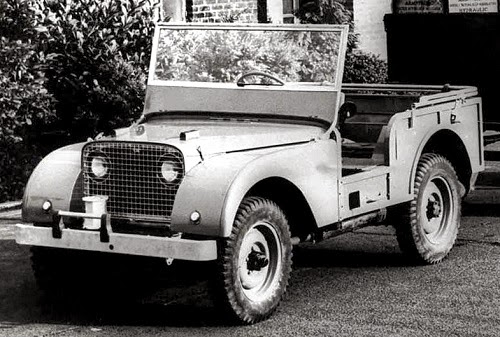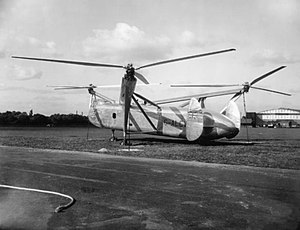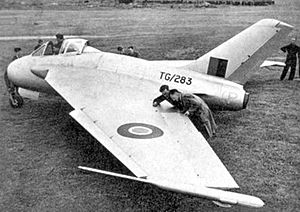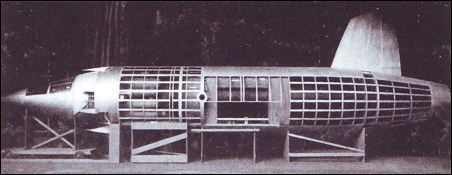Once again at Earl's Court Britain's car manufacturers displayed the latest and newest models which are currently on the market and new models which will appear in showrooms and garages next year.
Auto Carriers Ltd.
This small company is readying a new production model for next year, the AC 2 Litre.
The AC 2 Litre is an exclusive and stylish 2-door saloon and future plans see possible drophead coupé and tourer models to folow. The car's six cylinder 1991cc engine was first offered in the AC 16, back in 1922. However, the engine is now fed by 3 SU carburettors and has a power output of 74hp. The aluminium panelled body on a wood frame is fitted to a conventional steel chassis with rigid axles front and rear with semi elliptic leaf springs with, for the first time on an AC, hydraulic dampers. It has a hybrid braking system with hydraulic at the front and cable at the rear with 12in drums. The 2 door saloon has a top speed of 80 mph and can accelerate from 0-60 mph in 19.9 seconds. Fuel consumption is 23 miles per imperial gallon. The price is £1,277 including taxes.
 Alvis
Alvis
Alvis displayed the new TB 14 two-seat open-top sports car based on the running gear of the TA 14 saloon which went on sale earlier this year.The car can reach 80 mph and it has a price of £1,276.
Armstrong Siddeley Motors
Among the cars on display on the Armstrong Siddeley stand, there were details of an improved Lancaster saloon, Hurricane drophead coupe and Typhoon coupe with the engine upgraded to 2309cc and 75hp by increasing the cylinder bore from 65 to 70 mm. All three models fitted with the new engine will go on sale next year.
A brand new model for 1947 will be the Armstrong Siddeley Whitley large sports saloon. Based on the Lancaster, Hurricane, Typhoon series, the Whitley will be the last of the range to enter production. The Whitley uses the new 2309cc 75hp engine (with a tax rating of 18hp) coupled with a choice of synchromesh or pre-selector gearbox. The front suspension is independent using torsion bars while at the rear is a live axle and leaf springs. A Girling hydro-mechanical braking system is fitted with the front drums hydraulically operated while those at the rear are cable operated.
 Austin Motor Company
Austin Motor Company
The large Austin stand featured all the new models currently on sale. The small Austin 16, the Austin 28 limousine, the new A40 Devon, including the new Countryman estate version, and the A110 Sheerline luxury saloon. Austin has revealed plans to launch a limousine version of the A110 to replace the Austin 28 next year, and also a new 3995cc 125hp engine for the baseline A110 which will become the A125.
 Daimler Motor Company Ltd.
Daimler Motor Company Ltd.
Daimler revealed it is working on a new model, the Consort, which is an updated DB18. The updates include the integration of the firewall into the body, Girling-Bendix hydraulic front and rod operated rear braking system, head lights incorporating into the front guards, and providing a badge plate behind the front bumper with a more curved radiator grille. The engine is unchanged. It should go on slae early next year.
 Ford Motor Company Ltd.
Ford Motor Company Ltd.
On display was the 1946 model Ford Anglia, a makeover of the previous model with some styling updates. The price is £309 including taxes.
Also on display was a prototype Ford Pilot, a large four-door saloon which will go on sale next August. It will be fitted with a 3622cc 90hp sidevalve V8 engine with single Solex carburettor. The gearbox will have three forward ratios and one reverse. The front brakes will be hydraulically-controlled with cable-operated rear brakes. An estate version is also planned. The car will be capable of 80 mph with a 0 to 60 mph time of 21 seconds and 18 miles per imperial gallon fuel consumption.
 Frazer Nash
Frazer Nash
Their main display this year was the new Fast Tourer full width body variant of the High Speed with identical engine and transmission.
 Donald Healey Motor Company Ltd.
Donald Healey Motor Company Ltd.
The young Healey company had two new models this year currently on sale.
The Healey Westland Roadster is a two-seat sports car powered by a 2443 cc Riley 4 cylinder engine.

The Healey Elliott is a saloon introduced in 1946 powered by a 2443 cc Riley 4 cylinder engine. When it was introduced the Elliott saloon was claimed to be the fastest production closed-body car in the world and was timed at 104.7 mph over a mile. The body was tested in a wind tunnel to refine its aerodynamics.
 Humber
Humber
Humber's new Super Snipe Mk II drew crowds this year. The Mark II body is updated with headlights fitted into the wings and running-boards re-introduced. Transverse-spring independent suspension continues to be used. A drophead coupé made by Tickford will appear in 1947.
 Morris Motor Company
Morris Motor Company
Morris has launched a new car at the Earls Court Motor Show, London. The Morris Minor is billed as an 'economy car'. It was designed under the leadership of Alec Issigonis. Initially available as a 2-door saloon and tourer (convertible), the range will be subsequently expanded to include a 4-door saloon and a wood-framed estate (the Traveller), panel van and pick-up truck variants. Alec Issigonis' concept was to combine the luxury and convenience of a good motor car at a price affordable by the working classes. The Minor is a roomy vehicle with superior cornering and handling characteristics. The front torsion bar suspension is shared with the larger Morris Oxford, as is the almost-unibody construction. The engine is a 918 cc side-valve straight-4 producing 27.5hp for a top speed of 64 mph and 40 miles per imperial gallon.

The new Oxford MO was also on show. It replaces the Ten Series. The design is shared with Nuffield Organisation stable-mate the Wolseley 4/50. Designed by Alec Issigonis, the Oxford, along with the Morris Minor, introduces unit construction techniques to Morris. Torsion bar front suspension is another novelty and hydraulically operated 8 inch drum brakes are fitted all around. It uses a side-valve straight-4 engine with a single SU-carburettor displacing 1.5 litre and with an output of 40.5hp. Top speed is 72 mph. The four-speed gearbox has a column gearchange and steering is by rack and pinion. The MO is sold as a 4-door saloon and a 2-door Traveller estate with exposed wood. The price is £805 including taxes.
Next year a new subsidiary, Nuffield Malaya Ltd., will begin licenced local assembly of the MO as the ML Series II without heater and with mould-resistant seat covers and interior roof linings for the Far Eastern market.
A commercial vehicle version of the Oxford MO is produced as a van, pickup, or chassis cab model. It uses some of the bodywork of the Oxford MO but with a chassis underneath. This is marketed as the Morris Cowley MCV.
 Rover
Rover
Among the Rover cars on display the new Land Rover was making a stir, especially since reports have been coming back from Africa where it is now in use by several companies, and rumoured also in Ubangi Shari.
 Triumph Motor Company Ltd.
Triumph Motor Company Ltd.
The Triumph 1800 Town & Country Saloon is now on sale. It has a 1776cc, 65hp engine and the gearbox from the Standard Flying Fourteen. The chassis is fabricated from tubular steel and is a lengthened 108 inch Roadster chassis, the transverse leaf spring front suspension also coming from the Roadster. The cars are well fitted out with leather seats and a wooden dashboard. The price is £1,425 including tax.
The new Roadster was designed shortly before Triumph was bought by the Standard Motor Company and the Managing Director, Sir John Black, wanted a sports car to take on Jaguar. Frank Callaby was selected to style the new car. The body is built from aluminium and the chassis is hand welded with steel tube. The engine is based on a 1.5 Litre, four cylinder Standard design. A four speed gearbox with synchromesh on the top three ratios is used. The tubular steel chassis features transverse leaf sprung independent suspension at the front and a live axle with half elliptic springs at the rear. The brakes are hydraulic. Passenger accommodation is on a bench seat with the car's 64 inch width it can seat three. The car's unusual width also makes it necessary to fit three screen wipers in a row. Top speed is 75 mph and 0–60 mph takes 34.4 seconds.

Quoted
half a pint of free milk daily provided to all pupils under the age of 18 in state schools across the United Kingdom



















